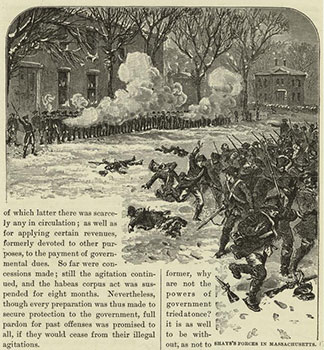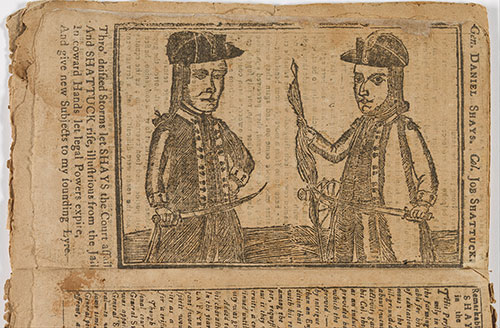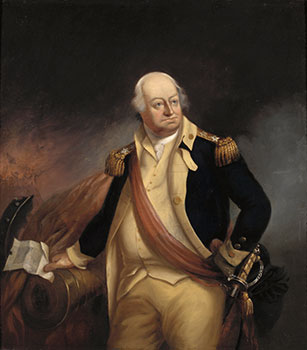Learn
Shays' Rebellion
International Challenges
The Articles of Confederation was written to bind together thirteen "free and independent states" in order to form a union that would provide a common defense against European foes. While an American victory in the Revolutionary War freed the U.S. from British policies, it left a fledgling nation to fend for itself in world affairs.
Britain dealt a crippling blow to American trade by prohibiting trade with the British West Indies. Relations with France were strained as well, due to the large American war debts.
America's newly established government was struggling against the economic woes of the 1780s, while also trying to find its place in world affairs. Trade restrictions put in place by England, France, and Spain were stifling the sale of American goods, and Congress continued to struggle with national debt.
Read more about The Economic Crisis of the 1780s.
Shays' Rebellion
The postwar economy in America was depressed. States either chose to print currency or tax their citizens to pay off debt.
Massachusetts levied taxes, and, as a result, the state's farmers (many of whom were veterans of the Revolutionary War) were losing their farms because they could not pay the heavy taxes. In 1786, the overbearing taxes led to an uprising by Massachusetts farmers known as Shays' Rebellion.

Daniel Shays, a farmer and former captain in the Continental Army, led rebels to close the courts by force and free prisoners from jail who had unpaid taxes and debts.

Shays' Rebellion led many central figures to question the need for a stronger central government.
Read the following to learn more about this event:
